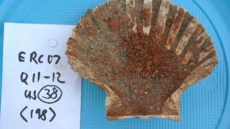A study co-authored by Indian-origin scientist Anurag Agrawal has found that when plants develop mutually beneficial relationships with animals and insects, plant families become more diverse by evolving into more species over time.
The researchers conducted a global analysis of all plant families, more than 100 of which have evolved sugary nectar-secreting glands that attract and feed protective creatures such as ants.
"We found that plant groups with nectar glands contain greater numbers of species over time than groups without the glands," said Agrawal, professor of ecology and evolutionary biology at the Cornell University in the US.
"By attracting bodyguards to plants, these glands can increase plant success in a variety of habitats by protecting them from local pests," added co-author Marjorie Weber from the University of California.
This, in turn, may increase plant survival in remote places, decrease risk of extinction or both.
When ants defend plants against pests, the plants may apply the energy and resources that would otherwise have been used to defend to the development of new traits, Agrawal said.
These benefits may make such plants more successful at migrating to new places, where they can diversify into new species over time.
The analysis was possible because of the DNA sequence data available for many plant species, Agrawal added in the study that appeared in the journal Proceedings of the National Academy of Sciences.





